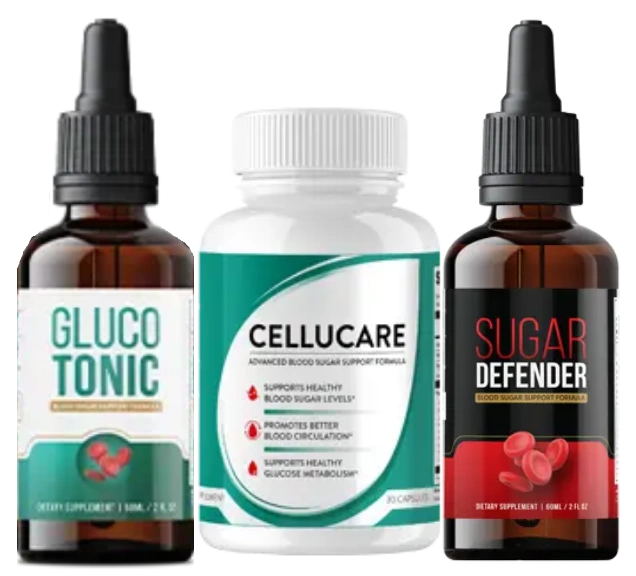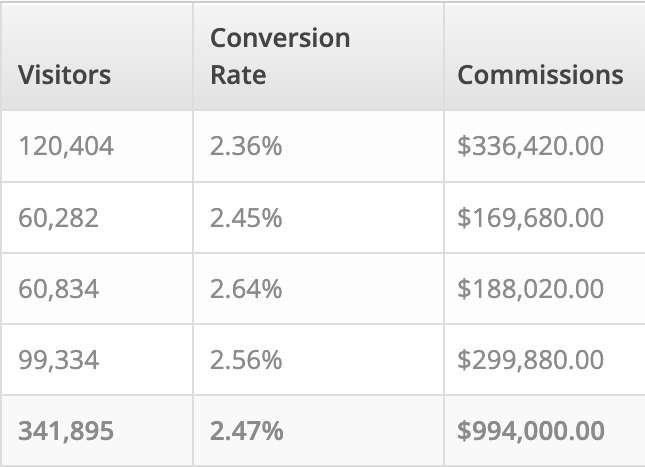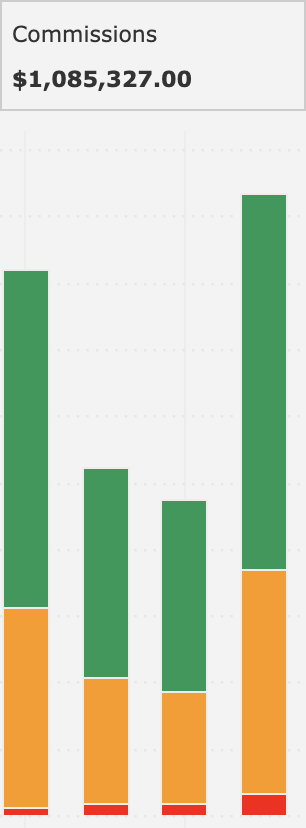1.1 Understanding Market Saturation
Diet and weight loss supplements are not only competitive but also heavily scrutinized by advertising platforms. Facebook, Google, and even native networks impose stringent policies on “miracle” diet claims, aggressive before-and-after photos, and unrealistic results. This high level of saturation and regulation often drives costs per click higher, cuts into margins, and increases the risk of ad disapprovals.

1.2 Blood Sugar as a High-Demand Niche
The prevalence of diabetes and prediabetes continues to rise globally. According to the World Health Organization (WHO), the number of adults with diabetes has almost quadrupled since 1980, and millions of people are borderline or at high risk. Beyond clinical diagnoses, millions more worry about “the sugar roller coaster” and the implications of elevated blood sugar levels. This creates a vast and often under-tapped market. People are hungry for solutions that can help them maintain stable blood sugar, boost energy, and support overall health.
1.3 Lower Competition, Higher Profit Potential
While “diet pills” and “weight loss powders” flood the market, fewer affiliates actively push blood sugar supplements. This niche can be extremely profitable because:
- Ad Costs: Lower competition can mean cheaper CPCs (cost per click) on Facebook, native ads, and even on YouTube.
- Niche Market: A more specific audience typically results in higher conversions, which can lead to a higher EPC (earnings per click) and overall ROI.
- Fewer Compliance Pitfalls: Compared to weight loss claims, blood sugar supplement claims (when properly presented) tend to face fewer policy violations and require fewer disclaimers—though compliance remains critical in health niches.

2. Who Is the Ideal Audience for Blood Sugar Ads?
2.1 Demographics
- Age Group: Blood sugar concerns tend to intensify for individuals aged 45+, but many in the 30–45 range are also increasingly conscious of their metabolic health.
- Gender: Concerns about glucose management are fairly balanced between men and women. Some studies suggest men may be less proactive about health, opening a unique angle to target them with “prevention” messaging.
- Lifestyle: Urban and suburban dwellers with busy lives, those with a strong interest in health, and people aware of the risks of type 2 diabetes.

2.2 Psychographics
- Health-Conscious: People actively searching for dietary changes, worried about sugar or carbohydrate intake, and frequently reading up on nutrition.
- Energy-Focused: Individuals who notice mid-day energy crashes, sugar cravings, or mood swings that might be linked to glucose spikes.
- Preventative Mindset: Those who do not yet have a diabetes diagnosis but are eager to prevent chronic conditions.
2.3 Overlapping Diet-Weight Loss Segment
The silver lining for affiliates is that the blood sugar audience significantly overlaps with the weight loss audience. Many people managing or trying to lose weight are also deeply concerned about “hidden sugars,” insulin spikes, or overall metabolic health. Capitalizing on this overlap is easier than you might think—just tweak your angle and messaging.
3. Market Research and Competition Analysis
3.1 Review Existing Blood Sugar Products
Before running ads, familiarize yourself with the main players in the blood sugar supplement space. Look for:
- Key Ingredients: Berberine, chromium, cinnamon extract, and other widely cited ingredients known to help stabilize blood sugar.
- Brand Positioning: Are they heavily focused on “blood sugar management,” “overall metabolic health,” or “healthy energy levels”?
- Pricing Strategies: High-ticket, mid-range, or free trial—understanding the pricing spectrum informs your messaging and conversion approach.

3.2 Assess the Competition
Even if it’s a smaller niche compared to weight loss, the blood sugar supplement market does have established brands, and occasionally, big players in the health space. Observe:
- Advertising Channels: Where do these brands run ads? Facebook, search, native ads, YouTube?
- Ad Messaging: Are they focusing on clinical studies, testimonials, or lifestyle imagery?
- Landing Pages: Evaluate at least three competitor landing pages to find out their angles, funnel flow, and overall conversion tactics.
3.3 Identify Gaps and Opportunities
- Information Gaps: Perhaps the competitor ads aren’t diving deep into the everyday challenges of managing cravings, sugar spikes, or related issues like “brain fog” or “mid-day crashes.”
- Emotional Triggers: The fear of complications (heart health, neuropathy) or the desire for energy and longevity can be powerful motivators—just be sure to remain compliant and avoid exaggerations.
4. Pivoting Your Existing Funnel: From Diet Ads to Blood Sugar Ads
4.1 Messaging Adjustments
If you previously sold dietary supplements by highlighting weight loss success, shift your angle to “balanced blood sugar” and “steady energy.” Rather than talking about shedding belly fat, frame it as:
- “Sustainably support healthy glucose levels”
- “Feel energized, not depleted”
- “Help manage cravings so you can still enjoy what you love—without the sugar crashes.”
4.2 Landing Page Overhaul
- Headline: Replace “Burn Fat Fast” with “Are You Struggling with Unstable Blood Sugar Levels?” or “Discover the 5-Second Hack to Balanced Blood Sugar.”
- Sub-Headline: Introduce the unique mechanism or ingredient in your offer that sets it apart from everyday vitamins.
- Core Benefits: Instead of focusing on “fast fat burn,” emphasize “steadier energy,” “reduced sugar cravings,” “support for healthy insulin function,” and “possible weight management side benefits.”
4.3 Sales Funnel Optimization
- Upsells/Downsells: For blood sugar offers, upsells might include additional supply for longer-term regulation or complementary supplements like fish oil, multivitamins, or probiotics.
- Recurring Billing: Position continuity or subscription for best results in controlling blood sugar long term, which translates to reliable monthly recurring revenue.

5. Crafting High-Converting Ad Copy for Blood Sugar Supplements
5.1 Emotional Hooks
For an audience worried about high glucose levels or energy crashes, emotional triggers can work. However, you must remain within platform compliance. Some effective emotional hooks include:
- “Imagine waking up every morning with stable energy.”
- “Are sugar spikes stealing your joy?”
- “Balance your glucose, reclaim your life.”
5.2 Differentiation through Benefits
Highlight how your recommended product stands out with a unique ingredient blend or a clinically tested formula. Keep the copy benefits-driven:
- “Clinically-studied ingredient to help regulate blood sugar”
- “Supports healthy insulin sensitivity”
- “May promote healthy cholesterol levels”
5.3 Call-to-Action (CTA)
Entice clicks with a clear CTA:
- “Learn More About Achieving Stable Blood Sugar”
- “Claim Your Risk-Free Bottle Today”
- “Get the Full Breakdown on This Metabolic Health Breakthrough”
As with diet ads, consider rotational testing of at least three CTA variations to identify which resonates most with your audience.
6. Targeting Strategies to Tap the Blood Sugar Market
6.1 Facebook and Instagram
- Interest Targeting: Diabetes awareness pages, magazines focused on healthy living, major health bloggers, or mainstream diet/fitness interests.
- Custom Audiences: Leverage your existing customer lists. Past diet supplement buyers could be excellent prospects for blood sugar products.
- Lookalike Audiences: Create lookalikes of your best-performing health supplement buyers. The overlap is likely high, especially if you previously sold weight loss solutions to people with metabolic concerns.
6.2 Native Ad Networks
Popular native platforms like Taboola, Outbrain, and Revcontent allow you to zero in on an older demographic reading articles related to health conditions, healthy recipes, or even retirement. Focus on:
- Publisher Whitelist: Target health-related publishers like Healthline, WebMD, or niche diabetic resources if available.
- Use Engaging Headlines: “This Odd Trick May Help Steady Your Blood Sugar,” “Doctors Baffled by 5-Second Method to Control Sugar Levels.”
6.3 YouTube Ads
- Keyword and Placement Targeting: Focus on videos that discuss prediabetes, diabetes management, healthy diets, or related issues.
- In-Stream Video Ads: Create a short, attention-grabbing video that highlights pain points like sugar spikes, cravings, and the desire for stable energy.
- Remarketing Lists: If you have any video content on your channel, retarget viewers who watched your previous videos related to weight loss or overall health.

7. Selecting Ad Creatives for Maximum Impact
7.1 Imagery
- Lifestyle Imagery: People enjoying a healthy meal, feeling energetic, or spending time with family—aim for a hopeful, positive vibe rather than fear-based visuals.
- Ingredient Imagery: Showcases of cinnamon sticks, berberine powder, or other scientifically recognized nutrients can grab attention and lend credibility.
- Simple Illustrations: Graphical representations of balanced blood sugar curves, or before-and-after glucose charts, can visually convey the offer’s core promise.
7.2 Video Ads
With increased competition across all platforms, video ads can give you a leg up:
- Short Explainer: 30- to 60-second “infotainment” about balancing blood sugar.
- Testimonial or Case Study: Real user stories about managing sugar levels or avoiding sugar crashes while using the supplement.
8. Complying with Ad Policies and Regulations
8.1 Avoid Medical Claims
Platforms like Facebook and Google Ads can be strict about claims that promise a cure or guaranteed results. Instead of “lower your A1C in two weeks,” opt for “supports healthy blood sugar levels.” Always frame it as supportive rather than curative.
8.2 Health Disclaimers
- FDA Disclaimer: On landing pages in the U.S., include the statement that these claims have not been evaluated by the FDA and that the product is not intended to diagnose, treat, cure, or prevent any disease.
- Lifestyle Focus: Emphasize healthy living as part of a balanced lifestyle. Encourage readers to consult with a healthcare provider.
8.3 Testimonials and Reviews
If you’re leveraging testimonials, ensure they’re real, documented, and not over-promising. Testimonials must reflect typical results or include disclaimers stating individual results may vary.
9. Landing Page Copy and Structure
9.1 Compelling Hero Section
- Headline: Immediately address the primary pain point or goal—“End Sugar Highs and Lows.”
- Sub-Headline: Touch on your unique angle—“Backed by Leading Nutritionists” or “Powered by Next-Gen Nutrient Technology.”
- CTA: Offer a free ebook on “7 Ways to Keep Your Blood Sugar in Check” or direct them to a short quiz. This is a fantastic way to capture leads before pitching.
9.2 Personal Story
People resonate with transformation stories. For example:
- Founder’s Story: A formulator or brand ambassador who struggled with high sugar levels, found a solution in a natural blend, then decided to share it with the world.
- Emotional Connection: Focus on how sugar spikes made them feel—tired, anxious, or worried about long-term health.
9.3 Proof Elements
- Clinical Studies: Summaries or references supporting the key ingredients.
- Charts and Graphs: Show a hypothetical improvement in glucose tolerance. Always label them as an illustration rather than a guaranteed outcome.
- Testimonials: Real-world experiences or user reviews describing improved energy, fewer sugar cravings, or stabilized daily glucose checks.
9.4 Pricing and Purchase Options
- Bundling: Offer discounts for multiple bottles. “Buy 3, Get 2 Free” or “Best Value – 180 Day Supply.”
- Subscription Option: For ongoing stability, present a monthly subscription at a lower per-bottle cost.
9.5 Risk Reversal
- Money-Back Guarantee: A 60-day or 90-day guarantee can ease buyer hesitation and help your conversions.
10. Bridge Pages and Pre-Sell Content
10.1 Why Use a Bridge Page?
For affiliates especially, using a bridge page or pre-sell page is often crucial because it allows you to:
- Warm up the audience with educational content.
- Comply with the stricter advertising policies (keeping claims on your own domain rather than on the ad’s direct link).
- Build brand or product credibility before sending them to the official product page.
10.2 Effective Bridge Page Structure
- Headline: “A Nutritionist’s #1 Trick for Maintaining Steady Blood Sugar Levels After 40.”
- Storytelling: Focus on a real scenario, either a personal anecdote or a hypothetical about someone who overcame sugar issues.
- Transition: Introduce the product naturally, e.g., “That’s when I discovered the secret ingredient the top doctors recommend…”
- CTA: “Click here to watch the full video” or “Continue to the next page to learn more.”
10.3 Educate, Don’t Oversell
Balance your pitch with helpful advice: share basic tips like “cut down on refined carbs,” “take short walks after meals,” etc., before revealing how the supplement helps amplify these lifestyle changes.
11. Conversion Optimization and Split Testing
11.1 The Power of A/B Testing
Just as with diet offers, testing headlines, images, and calls-to-action can lead to incremental gains that multiply your overall ROI. Even small tweaks can raise your EPC:
- Headlines: Split test at least two variations. One might emphasize immediate results—“Balance Your Blood Sugar in as Little as 30 Days”—and the other might focus on emotional triggers—“Enjoy Stable Energy and Peace of Mind.”
- CTA Text: “Buy Now” vs. “Secure Your Bottle” vs. “Learn More.”
- Placement of Testimonials: Above the fold vs. mid-page.
11.2 Using Heatmaps and Analytics
Tools like Hotjar or Crazy Egg can help identify where visitors drop off or hesitate. This data is invaluable for refining layout and calls-to-action.
11.3 Engagement Metrics
Check dwell time on pre-sell pages, video watch duration, and bounce rates. High bounce rates might indicate a disconnect between your ad copy and landing page promises.
12. Scaling Your Blood Sugar Campaigns
12.1 Reinvesting Profits
If your campaigns show strong ROI, scale methodically:
- Increase Daily Budget: Gradually raise your daily ad spend on high-performing ad sets to avoid abrupt changes that might trigger algorithm resets.
- Add New Ad Creatives: Prevent ad fatigue by rotating fresh images, angles, and video elements.
12.2 Horizontal Scaling
- New Platforms: If you started on Facebook, branch out to native ads or YouTube. Each channel can bring a different segment of your target audience.
- Geographic Expansion: If your offer permits, target English-speaking markets first (US, UK, Canada, Australia), then expand to international markets. Watch for local regulatory and language nuances.
12.3 Retargeting
- Facebook Retargeting: Show re-engagement ads to people who visited your pre-sell page but didn’t click through to the sales page.
- Email Follow-Up: If you captured leads via a free guide or quiz, follow up with a gentle drip sequence that introduces the product, provides more educational value, and addresses common objections.

13. Tracking and Analytics
13.1 Attribution
Implement robust tracking to measure which channels and ads drive the most sales. Whether using a platform like Voluum, ThriveTracker, or Google Analytics, you need clarity on:
- CTR (Click-Through Rate)
- CPC (Cost per Click)
- CPA (Cost per Acquisition)
- EPC (Earnings per Click)
- ROAS (Return on Ad Spend)
13.2 Key Performance Indicators (KPIs)
Define your main KPIs from the start. For example, if you’re testing a new offer, you might aim for at least a 1.5x or 2x ROAS before scaling. Decide what level of profitability is sustainable and measure everything against it.
13.3 Data-Driven Optimization
- Geographic Breakdowns: Find out if certain states or regions are more responsive due to higher health awareness or higher incidence of blood sugar issues.
- Demographic Insights: Optimize targeting if you notice better conversions among men aged 50+ vs. women aged 40–45.
16. Common Pitfalls and How to Avoid Them
16.1 Making Unrealistic Claims
Overpromising is the quickest way to get your ad disapproved or your affiliate partnership terminated. Focus on “supporting” and “maintaining” healthy blood sugar levels rather than guaranteeing results.
16.2 Not Segmenting Your Audience
Throwing a broad net might work for general weight loss ads, but blood sugar ads often require slightly more pinpointed targeting. If you lump all health enthusiasts together, you risk diluting your message. Segment for older demographics, the weight-conscious crowd, or those with a family history of blood sugar issues.
16.3 Neglecting Follow-Up Sequences
Many affiliates focus heavily on front-end conversions but neglect email or SMS follow-ups. This is crucial for premium health products, where buyers may take time to consider their options. Retargeting and email nurturing can significantly lift your overall conversions.
17. Putting It All Together: An Actionable Checklist
- Research: Familiarize yourself with top blood sugar supplements, their core ingredients, brand positioning, and audience.
- Messaging Pivot: Adapt your weight loss angles to focus on stable energy, metabolic support, and healthy glucose levels.
- Targeting:
- Facebook/Instagram: Interests related to diabetes awareness, healthy lifestyles, or older demographics.
- Native Ads: Health-focused publisher sites, compelling curiosity headlines.
- YouTube: Keyword targeting for blood sugar, diabetic recipes, or glucose management discussions.
- Ad Creative: Use lifestyle and ingredient-centric imagery. Make short, punchy videos focusing on how the supplement supports stable blood sugar.
- Landing Pages:
- Emphasize the “pain points” like sugar spikes, energy crashes, cravings.
- Highlight clinical backing and testimonials.
- Offer a compelling guarantee.
- Compliance:
- Avoid absolute medical claims.
- Disclose FDA disclaimers.
- Ensure testimonial authenticity.
- Sales Funnel:
- Consider a quiz or pre-sell bridge page to warm up cold traffic.
- Set up upsells (e.g., multiple-bottle deals) and downsells for those who hesitate.
- Testing and Optimization:
- Run A/B tests on headlines, images, CTAs.
- Use analytics tools to track user engagement and optimize copy.
- Scaling:
- Increase budgets on winning ad sets.
- Expand horizontally to new platforms and geos.
- Implement retargeting to capture lost leads.
- Long-Term Relationship Building:
- Maintain an email newsletter or blog about metabolic health.
Conclusion
Transitioning from promoting diet supplements to blood sugar supplements can be a game-changer. You’re tapping into a massive and growing market, often characterized by less competition and lower ad costs than weight loss offers. The same audience that wants to shed pounds frequently also struggles with sugar cravings, energy crashes, or borderline glucose levels. By making strategic pivots in your copywriting, targeting, and funnel design, you’ll discover opportunities for a higher EPC and a better overall ROI.
Key to this success is understanding and addressing the unique concerns of the blood sugar audience, providing credible and compliant claims, and fully leveraging the overlap between health-conscious consumers who are also weight-conscious. Whether running ads on Facebook, native platforms, or YouTube, remember to split test aggressively, provide real value, and build trust. By executing the steps laid out in this comprehensive blueprint, affiliates can confidently transition to blood sugar offers, optimize campaigns, and enjoy sustainable long-term growth in one of the fastest expanding niches in the health supplement industry.
